Not far from the partly submerged and now abandoned Rummu Prison, there is a small cemetery containing some rather unusual tail fin gravestones.
The area is home to a large airbase which hosts the NATO-backed Baltic air-policing mission, an air defence system put in place to safeguard the airspace over the three Baltic states of Estonia, Lithuania and Latvia. The place is obviously quite active as we heard the distinctive roar of jet fighters a couple of times during the few hours we were in the vicinity.
Amari Air Base, as it is known, wasn’t always NATO, however. From the time of its establishment during World War II (around 1940/41) up until the early 1990s and the breakup of the USSR, the airfield was under the control of the Soviet Union and the tail fin tombstones dotted around this burial ground all honour Soviet pilots who lost their lives at the airbase. During this period, the airbase was known as Suurküla aerodrome.
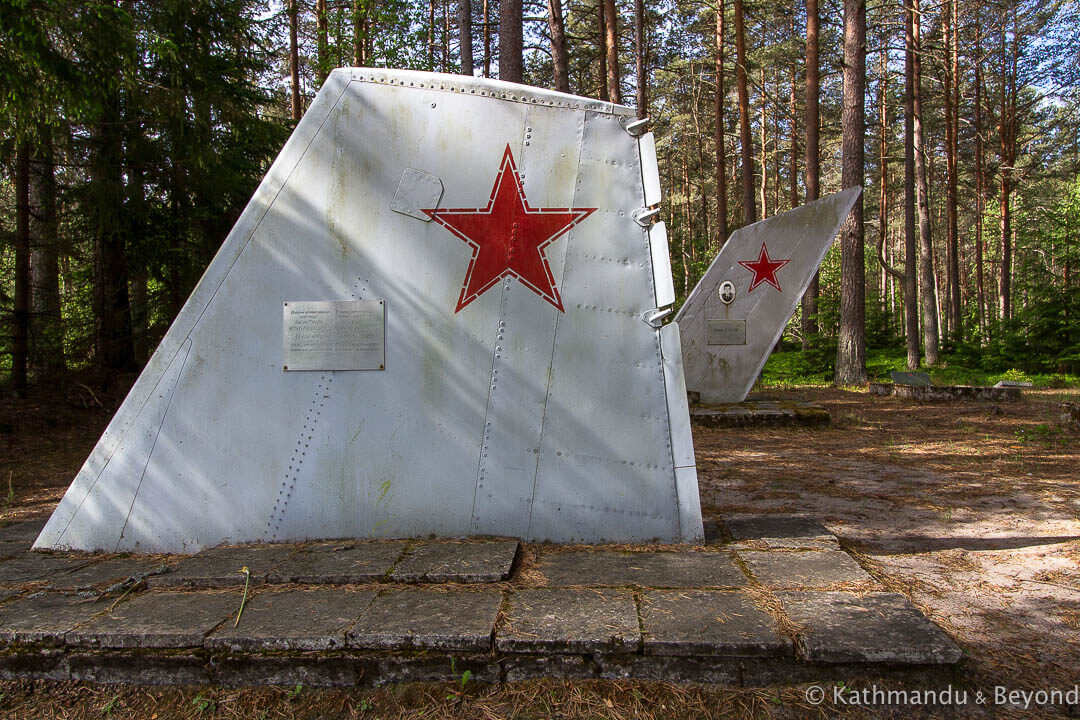
There isn’t much information about the cemetery in English but a Google search in Estonian reveals some interesting facts about the history behind the graves and why they are marked in such a distinctive way. A short article on Atlas Obscura suggests the airmen may have been buried under the tail fins of the actual aircraft they were flying. Although this could be true in a couple of instances, it is unlikely to be the case with the majority because the airmen on the base came from all over the USSR and, according to this Estonian article I found, their remains were returned to their homeland for burial and the tail fin grave markers are, in fact, memorials which were erected in the graveyard in order to honour their memory. In other words, most, if not all of them, are empty.
What’s more, it’s doubtful the tail fins on the graves belonged to the actual aircraft flown and it’s more probable that they came from old planes and those deemed not to be airworthy.
The same article goes into quite a bit of detail about some of the disasters that took place. Most of the fatalities happened as a result of accidents and instrument failure during training exercises and reconnaissance missions, etc. As far as I can tell none were related to actual combat. The majority of the deaths happened during the 1970s and 1980s, which was the height of the Cold War, and a number of them involved the Russian-designed Sukhoi Su-24, a supersonic medium-range bomber that is still in use today. The author of the article goes on to slate this particular aircraft, saying that, back then (I’m not sure about the present day), it was a difficult machine to pilot and had a poor safety record.
The most devastating accident happened on the base itself in April 1978 and not up in the air. There are two versions of the event. The first involves an aircraft overshooting its taxi-stand and hitting a stationary truck. The truck exploded and killed twelve men who were in the back of the awning-covered vehicle, and also caused burn injuries to several others. The other possibility is that a truck and a car hit one another and exploded. The number of dead is not given in this account. It’s difficult to say which is the correct one but the stone memorial, which was erected in memory of the dead, lists sixteen names, not twelve.
And the reason why these memorials were placed in this small, wooded burial site a short distance away and not on the actual base is that those in charge feared that the sight of these reminders of the dead would affect the morale of the airmen and others working there.
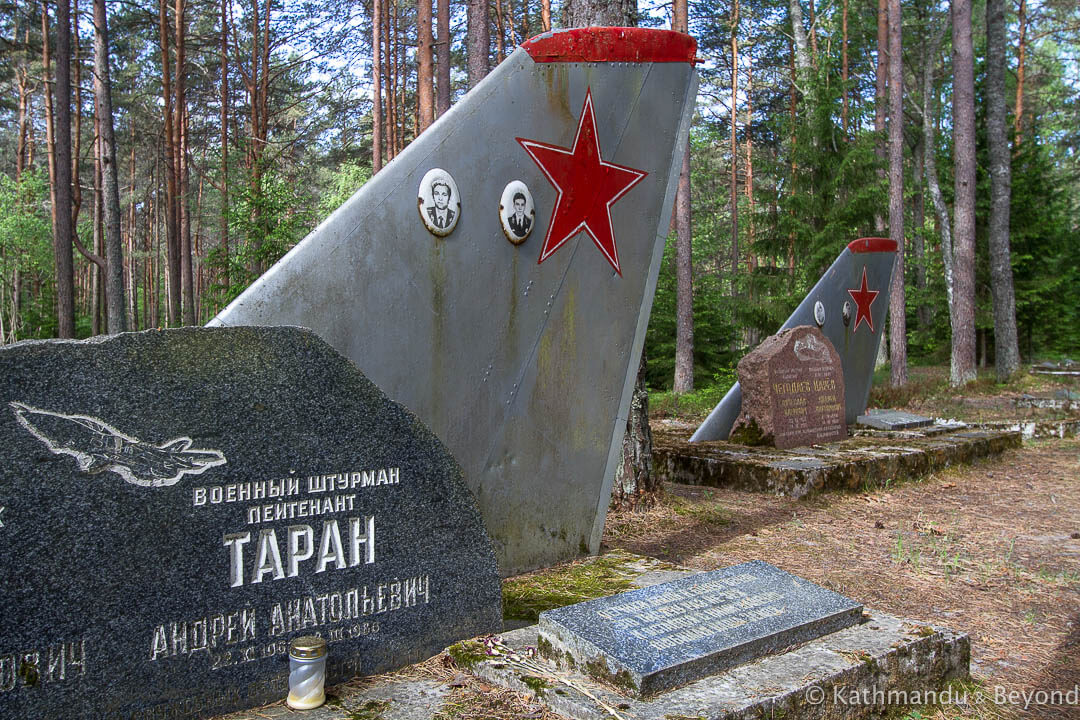
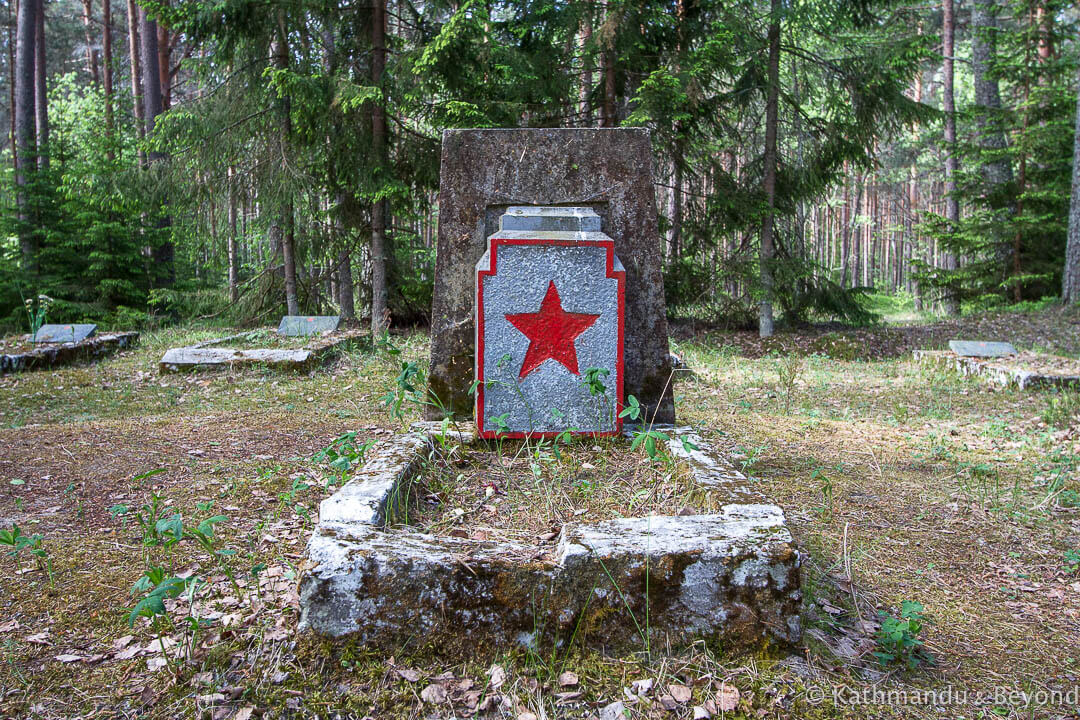
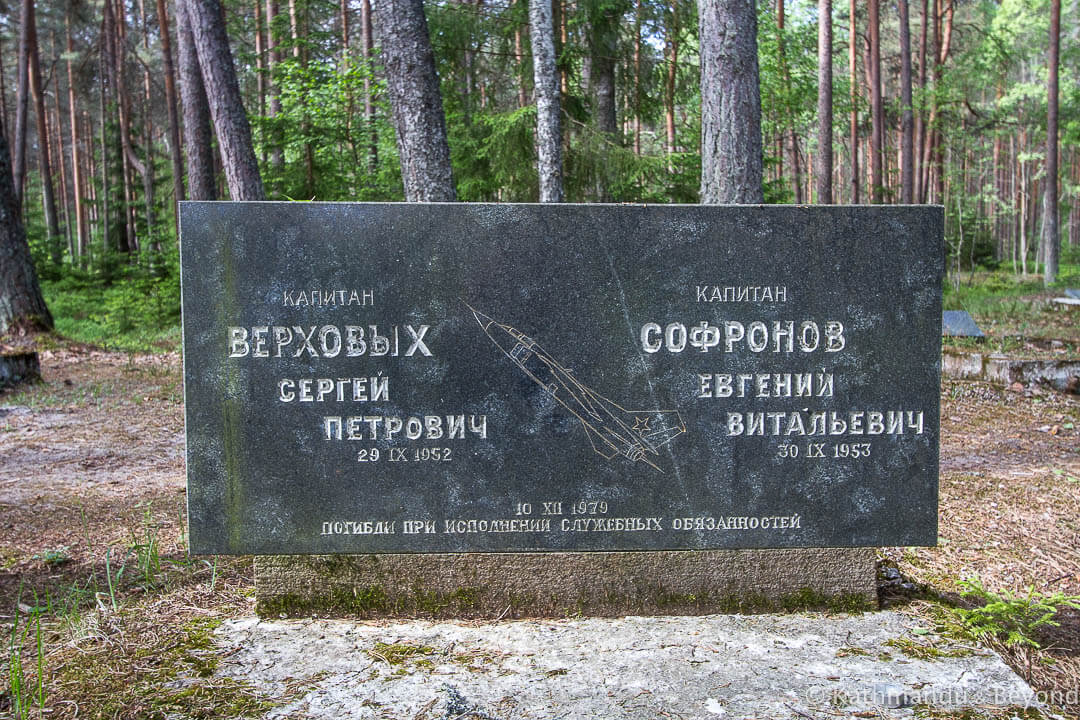
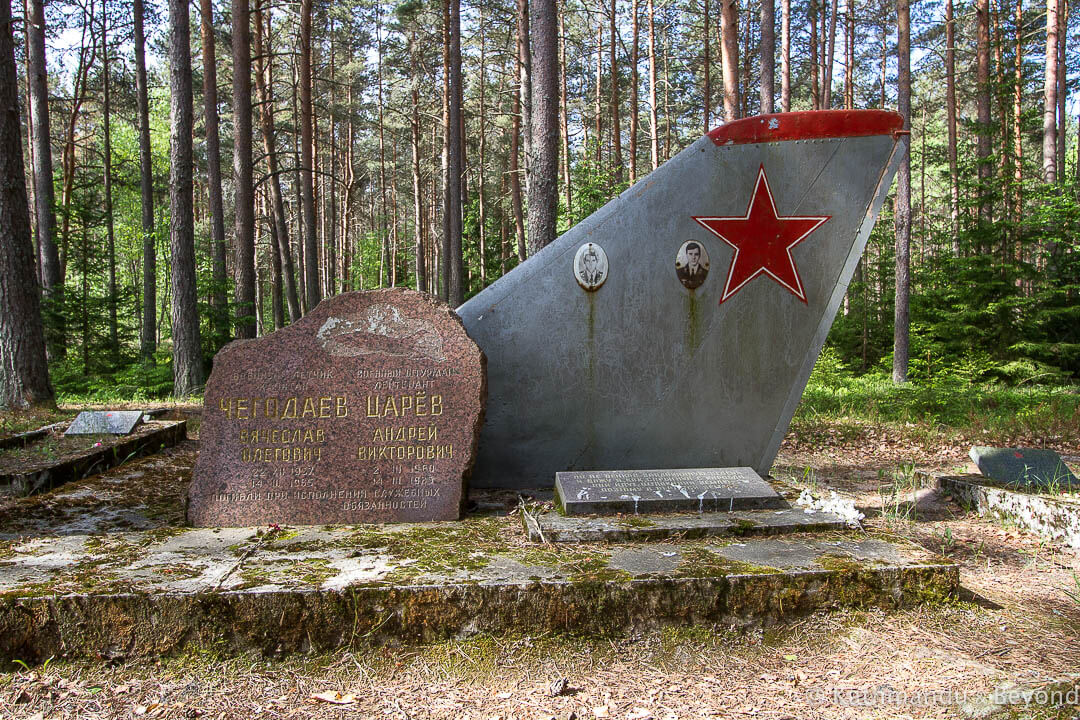
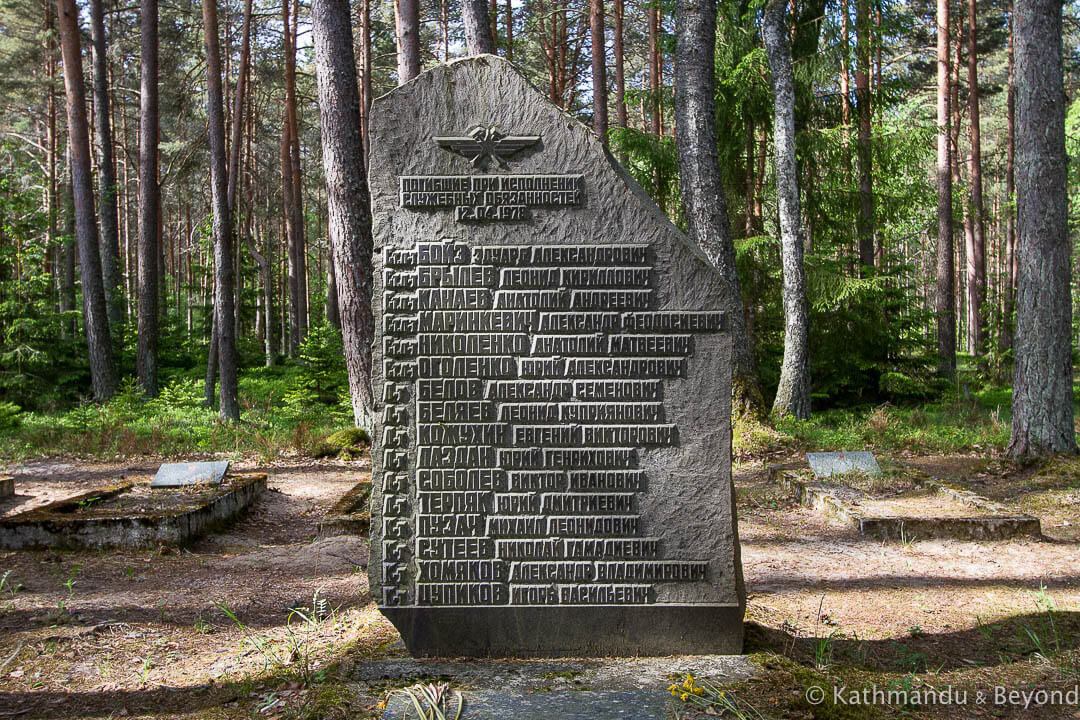
Visiting Amari Pilot Cemetery
The cemetery is situated by the roadside on the outskirts of the village of the same name and about 6km north of Rummu. If you have your own transport, the graveyard is easy to find using sat nav.
It is also possible to reach by public transport, and regular buses depart from a stop adjacent to Tallinn’s main train station (balti jaam), taking around an hour and a quarter. At the time of this update (September 2021), bus number 146 from bus stand 2 (balti jaam 2) runs between Tallinn and Amari village. The cemetery is about a 500 metre walk north-west.
The bus continues to the abandoned prison at Rummu Quarry, about 15 minutes further down the road, so you may want to consider combining both sights.
You don’t need long to look around and in fact, we were so terrorised by a squadron (pun intended) of mosquitos when we visited in May 2018 that, after about ten minutes, we were forced to give up and retreat to the safety of the car. Still, it’s an uncommon sight and if you are in the area, it’s worth the short detour.
The GPS coordinates for the Amari Pilot Cemetery are GPS 59.250061, 24.235257
READ MORE BLOG POSTS ABOUT THE BALTIC STATES

Not tricky at all to get there. There’s an almost hourly bus from Tallinn Baltic railway station. Bus stop Ämari is 300 meters from the cemetary.
Thank you, maybe it’s a new service. But thanks for the info, I’ve now updated the post.
by car there is no sign there, so you have to follow Google Maps (the place is on the map) and turn your head to the left 🙂
Realmente acogedor, este santuario no tiene muros estando así rodeado de un bosque infinito.
Aproximadamente 200 metros cuadrados.
Muchos de los recordatorios contienen una foto.
The surrounding forest certainly adds to the allure of the place. Thank you for your comment.